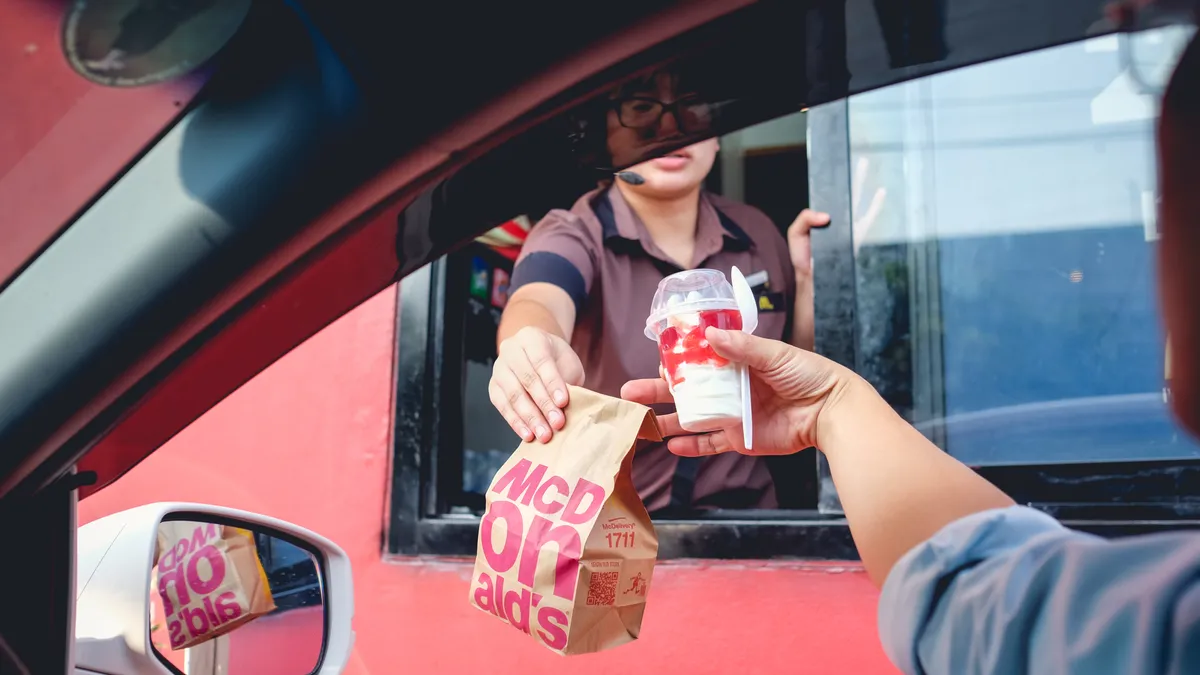Dive Brief:
- Though menu size ballooned in the past few years, the top 500 restaurants seem to be scaling back, according to Techonomic’s MenuMonitor. The average number of menu items fell to a two-year low of about 130 at the end of 2015, and hovered around 132 this year.
- Restaurants have eschewed appetizers and additional entrees for add-ons, such as specialty sauces, grilled chicken or shrimp, Restaurant Business reports. Companies are also embracing specialty drinks ranging from fruit-infused water and iced teas to premium craft cocktails.
- Younger consumers in particular go out of their way to visit quick-service restaurants for unique or seasonal menu items, and limited-time offerings have grown despite shrinking menus, jumping 64% since 2013.
Dive Insight:
As the labor market tightens and wages rise, restaurants have opted for more compact menus, both in an effort to please consumers and to minimize strain on staff. According to Gallup, customers spend an average of 109 seconds reading a menu, or just under two minutes.
Researchers at Bournemouth University discovered that consumers regardless of age or gender prefer a certain number of choices. In fine dining, for instance, they want 10 entrees but only seven starters and desserts. In fast-food or quick-service, they prefer a straight six items per category, including sides. With the rise of fast-casual, where core items can be customized to each guest’s preference, restaurants seem to be opting to emphasize toppings versus a slew of signature dishes.
Adding menu items also requires a simple extra that most restaurants just don’t have: space. Restaurants can still provide a varied menu by offering the same exotic sauce, for instance, on multiple dishes.
Operators have applied the same cross-utilization strategy to staff, training dishwashers as prep cooks and cashiers as servers. This tactic has proved essential for fast-casual kitchens creating salsas, falafel and everything in between on-site, as Naf Naf Grill and Velvet Taco do. Both chains train their managers in front-of-house and back-of-house operations. Cross-training also makes sometimes slim staffs more nimble, which is especially important as even fast-food kitchens grow more complicated.
Casual dining restaurants especially have felt the crunch from higher-quality options readily available at quick-service chains. DineEquity, which owns five brands including Applebee’s, IHOP and Chili’s, watched sales fall dramatically in the fourth-quarter of 2016 and they didn't bounce back the following year. To improve sales, Chili’s refocused its menu on best-sellers like burgers, fajitas and baby-back ribs.
Yet consumers don’t make it easy on restaurants that are trying to trim their menus. More than a third of consumers admit their tastes change with the seasons, per Technomic’s 2017 flavor report. Restaurants seem to be addressing these evolving consumer demands by relying on fan favorites but with limited-time offerings sprinkled in to keep them interested — and coming back.










